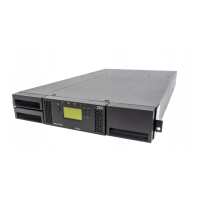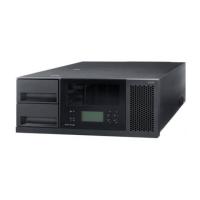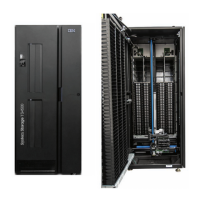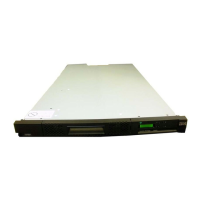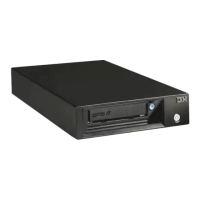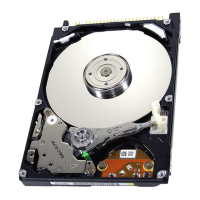WORM
The TS1130 tape drive and TS1120 tape drive support write once, read many
(WORM) behaviors and format attributes. Three WORM cartridge types are
supported: JW (full length), JR (short length), and (for TS1120 and TS1130 tape
drives) JX Extended WORM cartridge. WORM cartridges are factory-formatted as
WORM cartridges and may not be converted to data cartridges. The 3592 tape drives
allow append operations to data already on WORM cartridges, but do not allow data
to be overwritten under any circumstances.
Capacity-based and position-based LEOT reporting
The TS1130 tape drive and TS1120 tape drive use enhanced logic to report logical
end-of-tape (LEOT) data. The drive reports LEOT based on a combination of
indicators of capacity-based LEOT and position-based LEOT. The TS1130 tape drive
and TS1120 tape drive monitor the total accumulated physical tape files written to
the cartridge and reports the LEOT based on the capacity-based LEOT value, rather
than reporting LEOT based on the physical position on the tape (position-based
LEOT). To summarize, this technique reports LEOT based on the amount of
compressed data that is recorded to the cartridge and reduces the variation in the
amount of data recorded before LEOT is issued. For applications that use LEOT to
stop the write process, a more consistent capacity is recorded to the media. For a
higher percentage of the time, this process allows tape copies to complete without
overflow.
Enhanced format for recording error-correction codes (ECCs)
The logical formats of the TS1130 tape drive and TS1120 tape drive offers improved
error-correction-code capabilities over the 3592 J1A and LTO formats by increasing
the power of one of the two orthogonal Reed-Solomon ECCs that protect the data on
tape. The correction power of the inner code is approximately doubled from that of
the 3592 J1A and thus offers superior reliability of the data.
Drive mechanical and electrical reliability
The mechanism of the TS1130 tape drive and TS1120 tape drive is specified at a
mean-cycles-between-failure rate of 300,000 cycles, which is the highest reliability
rating in the industry. The mechanism contains special mechanical and electrical
features to prevent damage to the media on power-down or reset and to prevent the
dropping of the leader pin or other thread failures during similar interruptions. It also
tolerates extremely high vibration and shock environments without data loss or
degraded operation.
Multiple subsystem and automation support
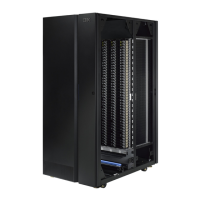
